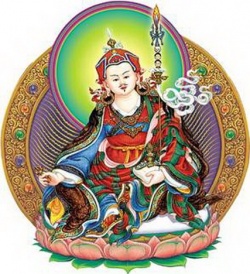Kriya Tantra
<poem> Kriya tantra (Skt. kriyātantra; Tib. བྱ་རྒྱུད་, ja gyü, Wyl. bya rgyud) — the first of the three outer classes of tantra and the fourth yana according to the nine yana classification.
The kriya tantras, or ‘action’ tantras, are so-called because they are concerned mainly with external conduct, the practices of ritual purification and cleanliness and so on.
Entry Point
The initial point of entry to the path of secret mantra vajrayana is ripening empowerment, so here one receives the water empowerment, which establishes the potential for ripening into the dharmakaya, and the crown empowerment, which establishes the potential for ripening into the rupakaya. Then one keeps the general samayas of the kriya yoga as they are explained in the particular texts themselves. View
In terms of determining the view, the basis of the path, one realizes that the ground of purification, the nature of mind itself, is the wisdom of empty clarity, and is ultimately beyond all extremes of elaboration, such as existing, not existing, appearing or being empty. Then one views the aspects of relative appearance, which are what must be purified, as the characteristics of the completely pure deity. Meditation
As for the path and the way of practising meditation, it centres around the four realities: the reality of oneself and the reality of the deity are practised by means of the six aspects of the deity, by visualizing oneself as the samaya form (Skt. samayasattva) and then invoking the wisdom being (Skt. jñānasattva) into the space in front, considering oneself as a servant and the deity as one’s master. One then focuses upon the reality of the mantra recitation which is the sound, and on the mind and the ground, and meditates upon the reality of concentration, which consists of remaining in the ‘flame,’ continuation of sound and culmination of sound. Conduct
One performs the three kinds of ritual purification, changes the three types of clothing, adopts a diet of the three white foods and practices ritual fasting and mantra recitation. Results
In the short term, one becomes a desire realm vidyadhara, and ultimately one attains awakening as Vajradhara of one of the three buddha families: of the family of enlightened body, Vairochana, of the family of enlightened speech, Amitabha, or of the family of enlightened mind, Akshobhya.
Although the practitioner has gained some understanding of absolute truth, in the realm of relative truth he still seeks accomplishment as something to be gained from outside. Kriya tantra practice or tantra of activity emphasizes ritual cleanliness: cleanness of the mandala and the sacred substances, as well as the cleanliness of the practitioner who performs ablutions, changes clothes three times a day, and eats the three white and the three sweet foods. (milk, curd, butter, sugar, honey, and molasses).
View: The view is based on the two truths. Absolute truth is the wisdom of the mind’s ultimate nature that is pure, luminous, and void. It is free of the four limiting concepts: existence, nonexistence, appearance, and emptiness. Relative truth may be viewed in two ways. According to the Madhyamaka it is completely fictitious; according to the view of the tantras, since phenomena are perceived as constituting the mandala of enlightened deities, relative truth is naturally perfect.
Meditation: The practitioner usually visualizes himself in his ordinary form. He regards the deity that is the object of meditation as a lord and requests to be granted siddhi in the same way as a servant or subject would supplicate a master. The contemplation of absolute truth, without any specific object of focus, is also practiced.
Action: Action focuses on cleanliness, concentration, fasting, and mantra recitation.
Fruit: Realization of the Three Kayas and Five Wisdoms of perfect buddhahood is attained in seven human lifetimes.
